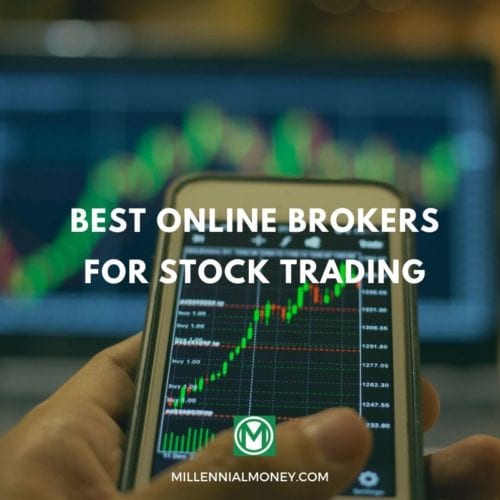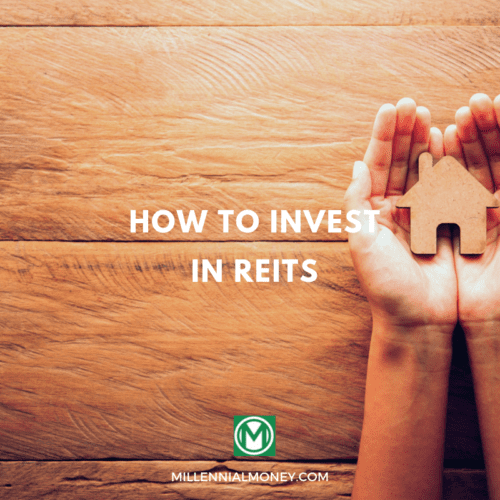A lot has changed since I started investing in 2010. And the rate of change is only accelerating.
Back then there was no Robinhood, no Ether, no decentralized finance, and no Cathie Wood. Investing was boring, which probably saved me. I bought a few stocks I liked and stashed the rest of my money in VTSAX (Vanguard Total Stock Market Index Fund).
If instead, I were starting to invest today, it would be harder to stay disciplined amidst all the noise. There’s a ton of hype and greed in the market now. This isn’t a bad thing. It’s just that the pandemic and everyone living on their phones has made it tough to decipher a good investment.
I spend an unnecessarily large amount of time reading about investing. Between press releases, the WSJ, Value Investor Insight, Reddit, and more… I sift through an immense amount of information. I also get asked a ton of questions like, “What do you think about [insert investment trend of the day]?”
I usually don’t answer those emails. It’s not because I don’t have the time—it’s because writing the same thing over and over gets old. I apologize if you’ve ever asked and I left you hanging.
So in this post, I’m going to share my thoughts on 11 trends I see in the investing world: some that interest me and others that don’t. All are relevant and I encourage you to dig deeper if they interest you. I’ll also share whether I think something has too much hype… or not enough.
11 Trends Reshaping Investing
- DeFi
- NFTs
- ARK Innovation ETF (ARKK)
- Electric Vehicle Sector
- Bitcoin
- Ethereum
- Other cryptocurrencies
- Fintech
- Sports Cards & Collectibles
- Domains
- Sustainable Investing
1. DeFi
DeFi stands for “decentralized finance.” The idea is that the blockchain, as a self-regulating system, can facilitate financial transactions through “smart contracts” more efficiently and cost-effectively than traditional financial institutions. It eliminates the middleman and democratizes payments, lending, borrowing, and trading.
A simple use case is taking out a loan without needing to work with a bank. Both parties simply set up a contract and agree to the terms which are then facilitated through the blockchain.
DeFi is a true disruptor, but it’ll take 3-5 years for widespread adoption. The public needs more education and time to get comfortable with the idea, not to mention really simple, easy apps for consumers to use. I see already well-known payment services like Square, PayPal, and Intuit’s Quickbooks potentially dominating in this space.
Traditional banks will slowly lose market share, but won’t go down without a fight… and a ton of acquisitions.
Watch DeFi: The Future of Finance DEFI – The Future Of Finance Explained
2. NFTs
You’ve likely heard a ton about NFTs (or “non fungible tokens”) in 2021. At the very least, you’ve seen a bunch of people on Twitter change their profile to some pixelated image and wondered why. The NFT space isn’t new, but its popularity exploded with the price of bitcoin and other cryptocurrencies, which you can use to buy these digital assets. If you want to go exploring, check out Opensea, the world’s largest NFT marketplace.
Cryptopunks are going for over $100K+. Bored Ape Yacht club NFTs—a pseudo online social club working to expand offline—go for $20K+. NBA Top Shots had their moment, but the hype faded pretty quickly. Gary V made millions on a bunch of ridiculously simple drawings. Beeple’s work is actually great in my opinion, but after selling his piece as a jpeg for $69 million in a Christie’s auction, even he doesn’t really know what’s going on.
There are a lot of crypto gains sloshing around out there and people want to buy stuff with them. I believe NFTs are here to stay and digital art does make it possible for more artists to make a living through their fanbases. I toyed with the idea of buying a Tycho NFT simply because I appreciate his work and want to support him. But it blew through my price range.
NFTs will have their moment, but demand will fizzle quickly for most offerings. Even if I’m wrong… it’ll be entertaining to watch.
3. ARK Innovation ETF (ARKK)
The ARK Innovation ETF is the brainchild of Cathie Wood, who has a quasi-religious belief in disruptive innovation. She’s done a masterful job putting out tons of content and videos on her thesis. Still, something doesn’t feel right to me.
ARKK blew up in 2020 with 150%+ gains largely due to Tesla and Zoom stock exploding, but the fund has suffered in 2021.
While Cathie Wood could easily make any marketer-of-the-year shortlist, I don’t see how it’s worth paying an expense ratio of 0.75% for a fund that holds a small handful of stocks you could just invest in on your own.
If you haven’t watched her discussion with Elon Musk and Jack Dorsey on cryptocurrency, it’s worth watching. Yet, but Wood’s thesis feels more like gambling than investing to me.
If you’re interested in some of Wood’s investments, you’re better off just investing in them directly. See Tesla, Square, Roku, Coinbase, and the rest of the list here. Of note, the perennially controversial Michael Burry (of The Big Short and betting against the housing market fame) shorted ARKK and Cathie has her fair share of critics.
Check out this well-reasoned Twitter thread on why ARKK might not be all it’s cracked up to be:
Dear Cathie, I was surprised at the indignity of seeing a high-profile investor short your largest product, so sought to determine why. Examining the $ARKK June 30 Factsheet, it appears devoid of what some investors refer to as “fundamental data.” Important? Let’s see…1/ pic.twitter.com/4JwNEBvygd
— Christopher Bloomstran (@ChrisBloomstran) August 18, 2021
4. Electric Vehicle Sector
You can’t really disaggregate investing in EVs with investing in the auto industry in general since almost all automakers have made some pledge of billions of dollars or lofty goals to go “all EV” by 20-whatever.
My wife and I recently test-drove a bunch of EVs on the market. And while I enjoyed driving a Tesla and even the Audi e-tron, I don’t see most of middle America driving these cars. They’ll drive GMs and Fords instead.
I also think Lithium batteries have a ways to go before being consistently reliable: Chevy Volts and Teslas catch fire all the time. Tesla’s dependability ratings are extremely low and quality control has been an issue for almost all EVs.
Don’t even get me started on NIO and all of the Chinese EV makers—investing in them is just gambling. I have no positions in Chinese companies because of the uncertainty of that market.
While I believe in Elon Musk’s vision and I’m continually impressed by his intelligence and earnestness, I was recently told at a Tesla dealership in Ohio that the earliest I could get Tesla solar panels for my house was in 10 years. Ten years! Sure, Tesla solar panels aren’t EVs, but I view this as just another hurdle in the early days of the EV ecosystem.
I remain curious about GM’s Ultium tech platform-first strategy, as well as the industry as a whole. My wife and I ended up buying a plugin-hybrid Volvo XC60 Recharge, which gives us the ability to drive about 20 miles per charge all-electric while running errands and 60+ mpg while driving on the hybrid system.
I think most people should wait for full EV vehicles to work out more of their kinks before going fully electric—I certainly am.
5. Bitcoin
I bought my first Bitcoin in a Walgreens parking lot. No joke. I met up with a guy in a Chicago Walgreens and traded him cash for BTC transferred to my wallet. A lot’s changed since then, including the skyrocketing value, mainstream popularity, and accessibility of BTC.
While I believe in the foundational philosophy of Bitcoin, I used to think that government regulation would crush BTC and the value of its decentralized structure. But I’m swayed by the argument that increased regulation potentially equals more legitimacy. However, I still don’t see how it’s practical for a large enough group of people to use BTC as a means of exchange in commerce. It’s just too volatile.
While scarcity (there are only 21 million bitcoins) helps it as a store of value, BTC is not a good investment for new investors. I see far too many young and new investors putting all their money in BTC or other cryptocurrencies instead of diversified investments for the long term.
I still view BTC like any other alternative asset class, in which it can make sense to hold 1%-5% of your net worth as part of a well-diversified portfolio. Holding any more than that is just gambling.
6. Ethereum
Ether is the true currency of the internet and the use cases are many. I also think that its creator, Vitalik Buterin, is one of the smartest dudes on earth and has a large heart. He isn’t in it to get rich; he’s truly changing the world.
I love everything being built on top of Ether and its role in the DeFi space. While it can quickly get extremely technical, I feel I’ve got a decent handle on what’s happening in the space.
From an investing standpoint, while I believe Ether is more useful than BTC, it’s still an alternative asset class investment. There’s no need for me to invest any more than 1% of my portfolio in Ether since I don’t need to add any additional risk to my portfolio.
No matter what happens to Ether, I enjoy participating in the evolution of this space. While more and more people are talking about Ether, no one is talking enough about its technological potential at the mainstream level. I think this will change in the coming years.
This Vitalik interview absolutely blew my mind:
7. Other Cryptocurrencies
We all know the land of cryptocurrency exchanges is the Wild West. There are far too many coins for me to keep up with, and though some have great potential, as an investment they just don’t make sense for me individually. As Warren Buffett would say, “This is beyond my circle of competence.”
While I’ve not invested in any of them, there is an increasing number of crypto index funds through which you can easily diversify across currencies. This idea is more intriguing than betting on any one coin or token, but this space is evolving so rapidly that it’s hard to distinguish between the good and the bad actors.
If it hasn’t been created yet, there’s definitely an opportunity for a Morningstar Rating-style service of crypto funds. If you know of one, do share! The space needs a ton more transparency but this will continue to evolve quickly.
8. Fintech
While fintech is a massive umbrella, there is so much happening in the payments, buy-now-pay-later, open banking, neo bank, and challenger bank space. The lines are blurry, with many apps and companies trying to do everything for everybody.
Everyone wants to offer a checking account to establish a “direct deposit” relationship with consumers so they can then sell through other products like loans and credit cards.
At the same time, there has been a proliferation of banking and fintech products for minority and niche audiences, just as with dating apps. There are now banks just for freelancers, gig workers, African Americans, first-generation Asian Americans, and more.
There is an immense amount of innovation in the financial services space. It’s exciting! As a writer, advisor, and investor in this space, I’m paying very close attention. The pandemic has radically shifted how consumers want to manage their financial lives and companies are paying close attention.
In my opinion, this will lead to consumers being better served and having the ability to more seamlessly use money to build lives they love. Big banks are already playing catch-up.
9. Sports Cards & Collectibles
Nothing warms my heart like seeing an unopened Nintendo Super Mario Brothers cartridge sell for $2 million. It’s just so insane it makes me smile. I remember Thanksgiving weekend, 1990, I spent many hours trying to beat Super Mario.
Sadly, my mom turned off the Nintendo before I could win (you had to leave the console on in those days—you couldn’t save your game).
I stopped playing video games in 1998, but I can still throw down on some Mario Kart or GoldenEye when I have the opportunity.
The collectibles space has blown up. It’s so thrilling that the 5-year-old inside of me had to get in on the action. Like most kids, I used to collect sports cards and I didn’t miss a beat starting a new collection almost 30 years later. But I don’t view it as an investment. To me, it’s just a new hobby… albeit an increasingly expensive one with some future appreciation potential.
It makes me happy to sit on the floor and open my card box. I can’t really put a price on that. Well, I guess I can: I’ve spent 0.02% of my net worth on sports cards in the past year, certainly maximizing my happiness per dollar.
10. Domains
Domains are the real estate of the internet. They continue to get more valuable as more people spend more time online and more companies go online-only. Your domain is your brand.
The website domain space has been on fire over the past year. Domains that used to sell for $5,000-$10,000 a few years ago are now going for $100k+. I recently sold a domain I bought for $240 ten years ago for $8,750. As well as the stock market has done over the past decade, my domain portfolio has consistently outperformed it.
I currently have over 800 domains in a portfolio that I’ve been building for 10 years. In the aggregate, I’m actually losing money on my domains every year since I sell so few of them, but as a whole, my portfolio has grown substantially. I continue to be bullish on domains and enjoy investing in them.
To learn more, I recommend checking out this podcast episode on domain investing, which does a great job at distilling the market opportunity and sharing a few different strategies.
11. Sustainable Investing
The planet is a good investment. It’s as simple as that. Yet while I’m encouraged by the growth of sustainable investing, but the space still has a long way to go. There still isn’t a unified or widely accepted standard for measuring the environmental impact of publicly traded companies.
A lot of financial companies are jumping on the socially responsible investing bandwagon, with some simply using it to sell expensive lackluster investments that actually still do poorly, while others are launching investments that are trying to actually do good in the world.
Socially responsible investing is a spectrum—. It’s a good, better, best scenario. Good is when you aren’t adding to the problem, better is when you’re investing in solutions to carbon pollution to help(helping the world), and best is of course when you are having the biggest positive impact possible—while still getting a decent investment return and helping as much as you can.
Here are some examples of each:
- Good: Investing in socially responsible index funds known as ESG’s (Environmental, Social, and Governance). The “good” is that ESG’s are typically an easy investment to invest in and you might be able to invest in them in your retirement account, but these investments often fall into the “not doing bad, but likely not doing much good for the environment” camp. Some examples include Vanguard’s ESG Stock Market ETF (ESGV) and the Fidelity US Sustainability Index Fund (FITLX).
- Better: Unfortunately, there’s often more risk associated with using your money to have the most positive impact on the planet. If you only have a few thousand dollars to invest or you’re just starting, these aren’t great investments for your retirement account. In order to help the world, you can invest directly in clean and renewable energy, like with Fidelity’s Select Environment & Alternative Energy Portfolio (FSLEX).
- Best: The best way to invest in our planet is to support companies and technologies that are explicitly trying to help our planet. There are many startups out there doing really cool things for the environment, but you most likely need to be an accredited investor (meaning you have a $1 million net -worth or your income is over $200,000 for an individual or $300,000+ or more for a couple). This is simply inaccessible for a vast majority of Americans.
It’s an incredibly exciting time to be an investor. If you’re new to investing, check out my article on how to start investing before investing in anything mentioned above.
What do you think? What am I missing? Do you think any of these have too much hype or not enough? I’d love to hear your thoughts.
LIFE UPDATES
What I’m Reading
Built To Sell: Creating A Business That Can Thrive Without You by John Warrilow. For some reason, I decided to read a number of books about selling a business after selling my business, but I think this book does the perfect job of distilling how to best build a business that you could eventually sell. This is a must-read for any entrepreneur or solopreneur. Even if you don’t plan to sell your business, building it to sell gives you more options and should make your business able to run without you.
Start Where You Are by Pema Chodron. I love this book. Pema is a beautiful writer and her words are helping me to slow down and live more compassionately. A worthwhile read to calm and expand your mind.
The Innovator’s Dilemma: When New Technologies Cause Great Firms to Fail (Management of Innovation and Change) by Clayton Christensen. I had the opportunity to hear Professor Christensen speak at a conference and it was one of the best talks I’ve ever heard. He passed away last January and I’m currently re-reading this book. This is pure gold if you’re building a business or want to understand how companies can best innovate. It’s more relevant than ever.
What I’m Watching
Charles Eisenstein Interview From Living The Change Charles is an inspiring writer and speaker who has an incredible ability to distill the challenges of our increasingly uncertain future. Listening to and reading his work helped me expand my definition of investing at a time of unparalleled change. This is well worth a watch.
Quote I’m Pondering
“’Happiness is not in the mere possession of money; it lies in the joy of achievement, in the thrill of creative effort.’” – Franklin D. Roosevelt





No comments yet. Add your own